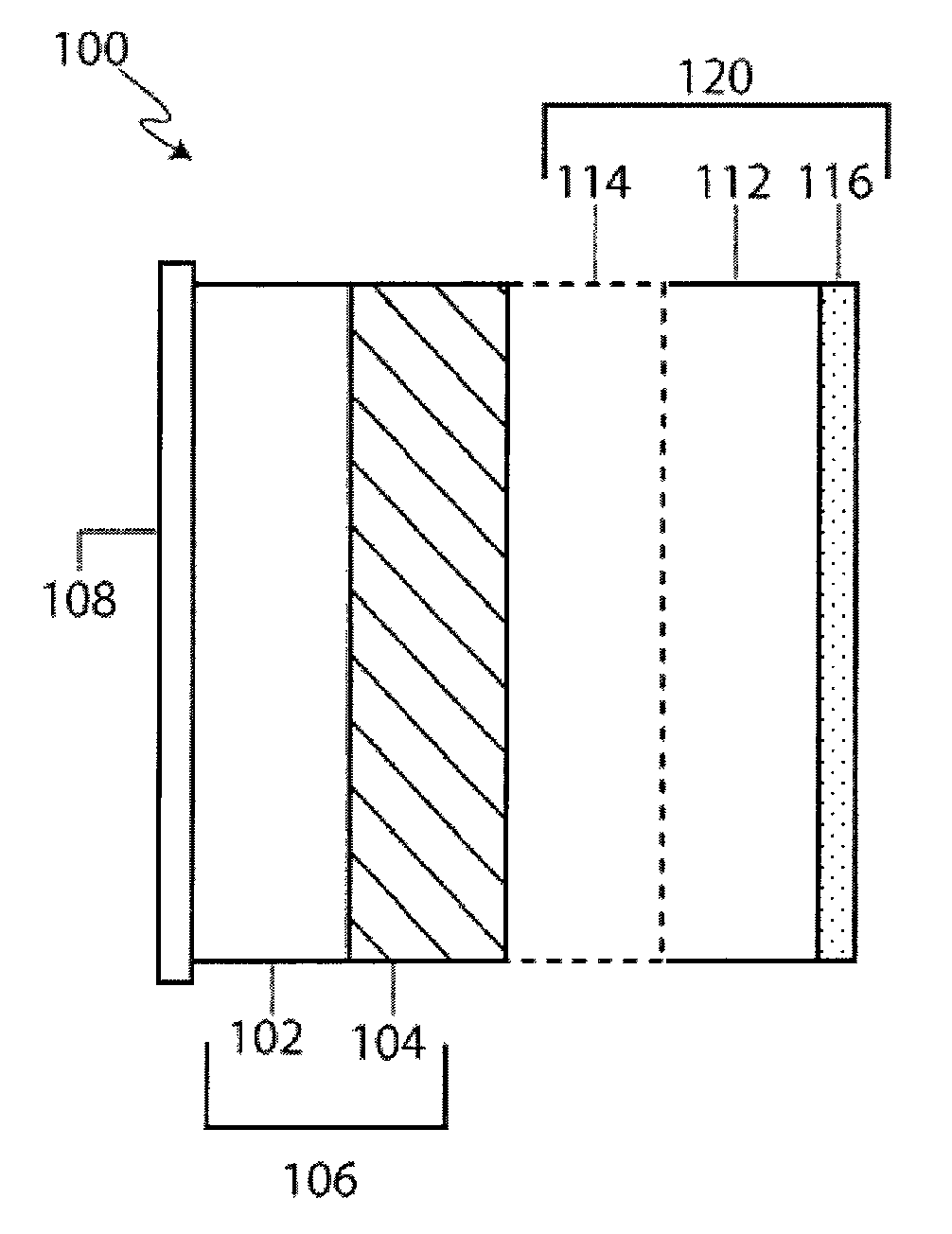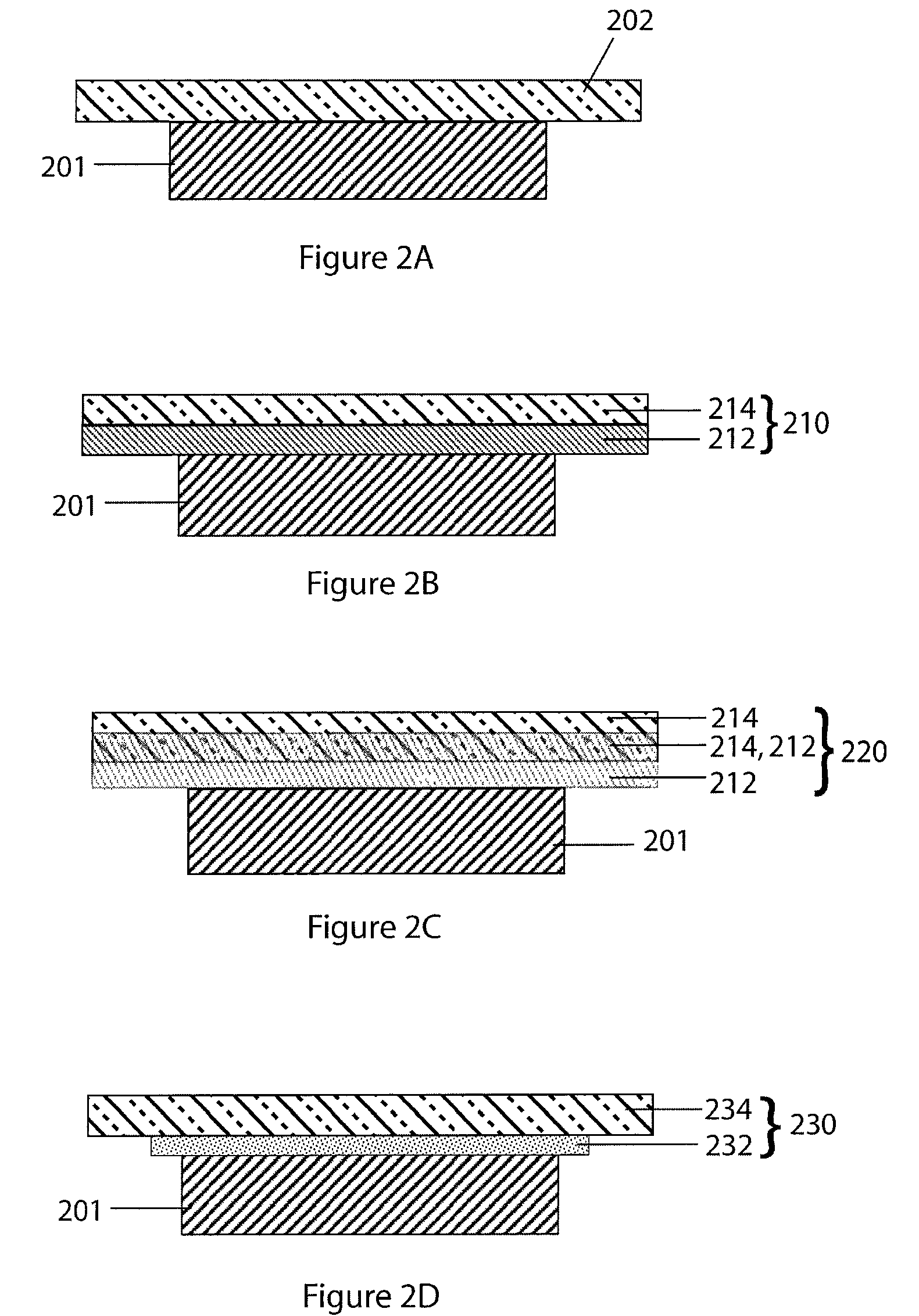Li/Air non-aqueous batteries
a non-aqueous, lithium-ion battery technology, applied in the direction of non-aqueous electrolyte cells, cell components, cell component details, etc., can solve the problems of destroying the integrity of the layer and the functionality of the anode, affecting the performance of the battery, and affecting the stability of the battery, so as to achieve significant improvement in battery performance
- Summary
- Abstract
- Description
- Claims
- Application Information
AI Technical Summary
Benefits of technology
Problems solved by technology
Method used
Image
Examples
example 1
Discharge of a Li / Air Battery Cell Having a Protected Anode and a Non-Aqueous Catholyte Comprising Acetonitrile Solvent
[0100]A non-aqueous Li / Air cell was assembled with a protected Li anode and a cathode compartment. The cell assembly and preparation of all non-aqueous electrolytes was carried out in a glove box filled with dry argon. The protected anode comprised Li foil with a thickness of 1 mm received from FMC Lithium Corporation. A disc-shaped Li foil having a diameter of ½ inch was pressed onto a Ni gauze current collector in a controlled atmosphere dry room with a dew point of less than −40° C. The protective membrane architecture included a polymeric microporous separator (Celgard 2400) as the first component material impregnated with a non-aqueous electrolyte (anolyte) and a glass ceramic membrane as the impervious second component material. Specifically, the first component material was a disc of Celgard 2400 microporous separator with a diameter of 9 / 16 inch and a thickn...
example 2
Properties of Non-Aqueous Electrolytes Based on Binary Solvent System Dimethylformamide-Ethylene Glycol
[0102]A search for non-aqueous electrolytes that are able to enhance the discharge capacity of Li / Air cells for moderate rates of discharge led to discovery of an electrolyte system based on solvent mixtures in the binary system dimethylformamide-ethyleneglycol. We found that non-aqueous electrolytes based on such mixtures demonstrate very attractive properties in Li / Air cells.
Non-aqueous electrolytes were prepared in a glove box filled with dry argon. Moisture content in the prepared electrolytes did not exceed 50 ppm. Wettability experiments were performed using individual dimethylformamide and ethyleneglycol solvents and also electrolytes containing LiCl and LiN(CF3SO2)2 supporting salts dissolved in dimethylformamide-ethyleneglycol mixtures. Two types of air electrodes (oxygen electrodes) were used in these experiments. The first type of air electrode was a gas diffusion electr...
example 3
Demonstration of Discharge Performance of Li / Air Cells Employing Non-Aqueous Catholytes Based on Solvent Mixtures of Dimethylformamide (DMF) and Ethylene Glycol (EG)
[0103]Li / Air cells were fabricated similar to the cell used in example 1. The protected anode employed Li foil with a thickness of 1 mm on a Ni gauze current collector, a disc of Celgard 2400 separator filled with 0.1 ml of non-aqueous anolyte comprising 1 M of LIN(CF3SO2)2 dissolved in the mixture (1:1 by volume) of 1,2 DME and Dioxolane, and a protective glass-ceramic membrane (AG-01 material) with a thickness of 150 μm. A disc of zirconia felt ZYF-150 with a diameter of ½ inch and a thickness of 3.8 mm acting as a catholyte reservoir was placed between the glass-ceramic membrane and the air cathode and was filled with 0.6 ml of catholyte. A gas diffusion electrode LT 140-E from E-TEK Corporation was used as an air cathode. Methods of sealing the edges of the glass-ceramic membrane and the cathode compartment were the ...
PUM
| Property | Measurement | Unit |
|---|---|---|
| thick | aaaaa | aaaaa |
| conductivity | aaaaa | aaaaa |
| thickness | aaaaa | aaaaa |
Abstract
Description
Claims
Application Information
 Login to View More
Login to View More - R&D
- Intellectual Property
- Life Sciences
- Materials
- Tech Scout
- Unparalleled Data Quality
- Higher Quality Content
- 60% Fewer Hallucinations
Browse by: Latest US Patents, China's latest patents, Technical Efficacy Thesaurus, Application Domain, Technology Topic, Popular Technical Reports.
© 2025 PatSnap. All rights reserved.Legal|Privacy policy|Modern Slavery Act Transparency Statement|Sitemap|About US| Contact US: help@patsnap.com



